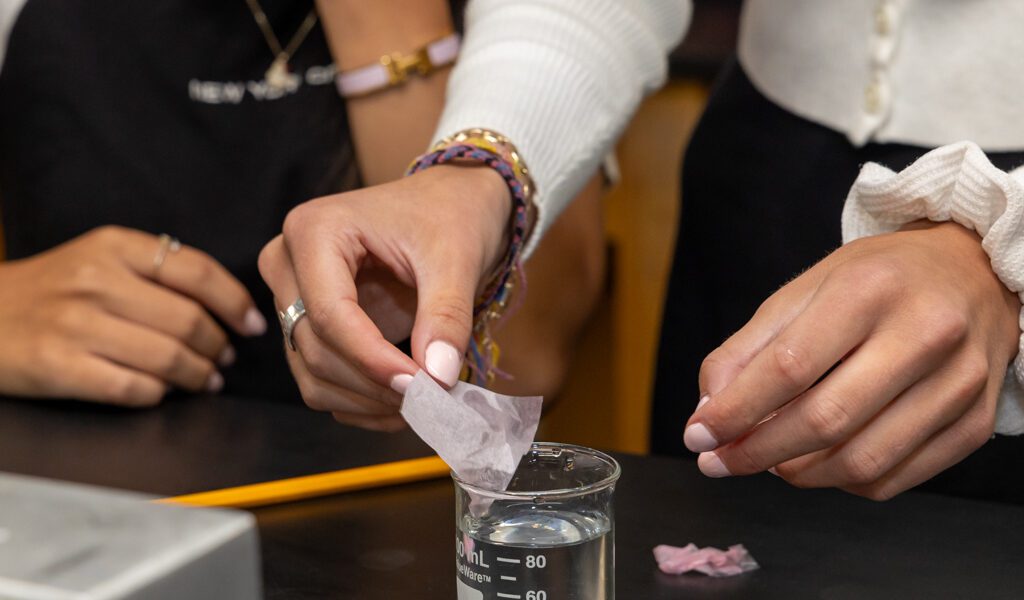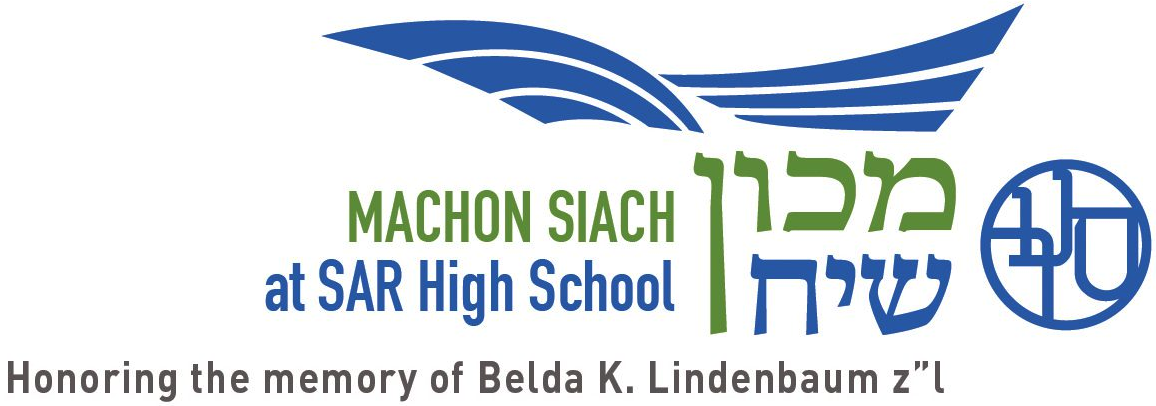
Modeling Instruction: A Pathway to Excellence in Jewish School Science Classrooms
In this era when international competition, technological changes, and cultural diversification are developing rapidly, it is crucial for Jewish private schools to equip students with the skills and knowledge necessary to thrive in an increasingly complex world. One teaching technique that I use in my chemistry and biology classrooms at SAR and encourage when I coach other STEM teachers is modeling instruction. This approach, rooted in inquiry-based learning, both aligns with the values of a Torah-based education and helps students develop the needed skills for their current and future studies.
Modeling instruction focuses on constructing and applying conceptual models of natural phenomena. Rather than lecturing or leading teacher-centered Socratic dialogues, modeling features student-centered learning activities, in which students investigate natural phenomena, work collaboratively to develop conceptual models to make sense of the phenomena, and apply their models to problems involving new situations.
In my years at SAR, I have found that modeling instruction can benefit Jewish private school students in multiple ways.
1. Making Science More Fun:
Many Jewish schools emphasize the importance of joy in learning. However, those important elements of joy are often lacking in traditional science classes. Because these classes are usually theory-based and teacher-centered, students may be disengaged or find the lessons boring. But well-devised modeling cycles, collaborative experiments, group discussions, whiteboard presentations, and debates encourage students to be more inquisitive and motivated, making learning more enjoyable.
Additionally, since most activities in modeling instruction are collaborative, students’ learning is more interactive and therefore more fun. The social and interactive nature of modeling instruction allows the science classroom to adopt some of the characteristics of the beit midrash, where chavrusa learning encourages students to push themselves to greater understanding in a lively, engaging atmosphere.
2. Fostering Conceptual Understanding:
Jewish education emphasizes in-depth understanding over rote memorization. Torah study engages students in interactive and investigative learning experiences. In traditional science classes, however, teachers directly impart knowledge to students through explanation and demonstration, prompting students to absorb information passively, which can lead to a shallower understanding of the material.
Modeling instruction, on the other hand, allows students to be the protagonists in the classroom while the teacher plays only a supporting role. Instead of passively receiving knowledge, the students conduct research; form their own understanding of the subject; and present their understanding in oral, written, and visual representations. For example, in one activity, I provide students with a series of cards, each of which contains information about a living thing. The students work collaboratively to classify the cards, which helps them understand how scientific categories and subcategories are created according to shared characteristics.
Activities like these help students think their way through the learning process, and, in doing so, they form much deeper and firmer understandings than they would in a teacher-centered classroom. This way of learning aligns with my students’ practice of seeking meaning and understanding in Torah texts, where they also search for and create insights, thus fostering a connection between their secular and religious studies.
3. Promoting Critical Thinking and Inquiry:
While at SAR, I have learned that, in Judaism, questioning and independent thinking are highly valued. For example, my students’ Gemara classes encourage them to think deeply and even to doubt, both valuable qualities in the science classroom as well. Talmudic and Torah educations necessitate debate, discussion, and asking questions.
Therefore, in my classes, students are given the opportunity to question one another’s work. For example, after each group displays and presents its results, other students are encouraged to ask questions and express disagreement. Such interaction not only mirrors how scientists work but also aligns with the Jewish value of intellectual curiosity, encouraging students to delve deeper into the complexities of the real world.
4. Enhancing Communication Skills
Through intensive training on communication skills, students can develop the confidence to engage in public discourses and debates about various topics, including the most controversial ones. The interactive nature of Judaic studies lays a solid foundation for students’ future interpersonal relationships, but it’s clear that science classrooms can build on these skills too.
In one experiment, for instance, students measure the pressure of an air sample contained in a syringe while manipulating the volume of air to record how pressure changes with volume. They then use a computer to graph the data and determine the mathematical relationship between gas pressure and volume. Finally, they draw a participle diagram to conceptually explain why gas pressure and volume have that relationship. Each step of this process pushes students to improve their communication skills as they must articulate – aloud to each other, in writing, and through visual media – what they are learning and how their thinking evolves as the experiment progresses.
5. Combining Learning and Doing
My students model for me how Judaism believes that a person serves God by studying sacred texts and putting what they learn into practice through virtuous actions. That is, Judaism promotes a reciprocal relationship between learning and doing: “na’aseh v’nishma” — we will do and we will understand.. In a modeling classroom, students engage in experiments, work collaboratively to analyze data, and design their own experiments and activities, all in the service of learning through action.
Finally, it is worth noting that when students work in groups to prepare for their presentations, they are required to display their findings and reasoning on small whiteboards; this demands significant effort as they strive to ensure clarity and aesthetic appeal in their work. This process aligns with the value of hiddur mitzvah, the beautification of a mitzvah. In this case, the mitzvah is the pursuit of knowledge, and beauty manifests in the quality of their work. Just like the reciprocal relationship between learning and doing, there is reciprocity between beauty and mitzvot: on the one hand, the Talmud teaches that individuals should infuse beauty into every mitzvah that they perform; on the other hand, individuals harvest beauty from the mitzvah. In this case, the mitzvah becomes the effort that students put into their work, and the beauty lies in the knowledge, inspiration, and sense of wonder that they achieve through scientific exploration. It is a learning experience that truly embodies for students the principle of “na’aseh v’nishma.”
While it may seem that Humanities courses are the logical place for SAR’s mission to help students “immerse themselves in a culture of learning and service as participants in the grand conversation between Torah and the world,” I have found that, through modeling instruction, science classrooms can be an ideal site for this work. Modeling instruction not only provides students with the skills and mindset necessary for success in science and the broader world but also resonates with many of the Jewish values my students endeavor to embody every day. When done right, students’ science education can reinforce their appreciation for the natural world as well as for their spiritual lives and learning.


